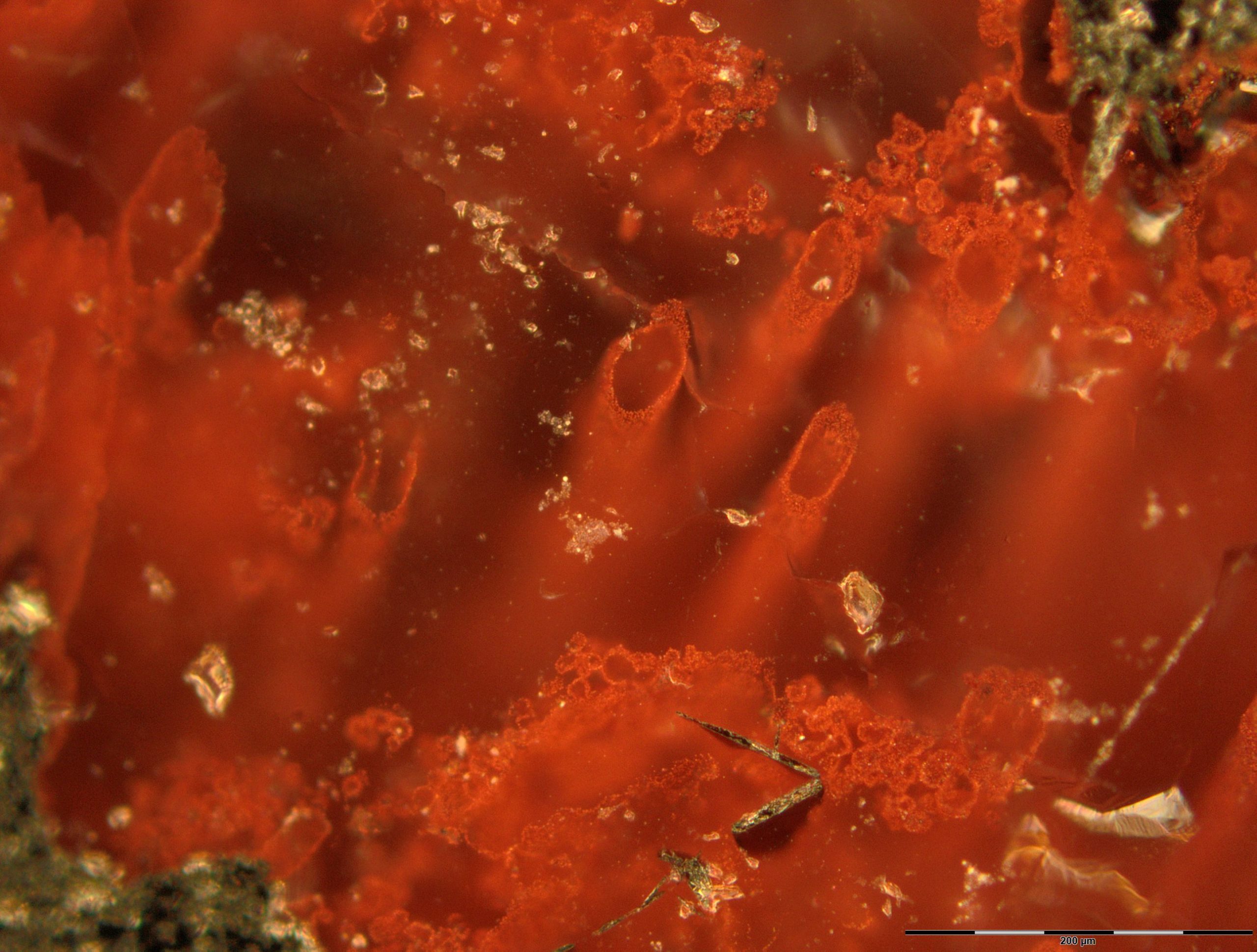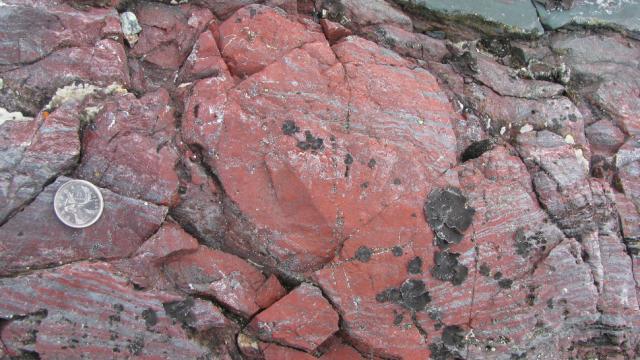An international team of researchers say they have found fossils dating back to at least 3.77 billion years ago, making them the oldest fossils ever found on our planet. The discovery, though sure to attract scrutiny, has implications for our understanding of how life got started on Earth — and how it may have emerged elsewhere.
Published today in Nature, the new study provides direct evidence of microbial activity in and around ancient hydrothermal vents. Found on a beach in northwestern Quebec, the fossils date back an astounding 3.77 billion years, which is less than a billion years after the formation of the solar system and our planet. This discovery suggests that habitable conditions appeared very early in Earth’s history, highlighting the apparent ease with which life is capable of emerging — whether it be on our planet or somewhere else.
Where and when life first emerged on Earth is still a mystery. This latest research suggests that some of the earliest habitable environments formed around warm hydrothermal vents on the ocean floor. It’s entirely conceivable that it was here — in the deep ocean — that life first popped into existence. Excitingly, similar conditions may have emerged elsewhere, such as Enceladus.
Prior to this discovery, the oldest fossils were found in Western Australia, dated to 3.46 billion years ago. The new microfossils, which are 300 million years older, now represent what is likely some of the earliest life to appear on our planet.
An international team led by University of College London (UCL) scientists found the remnants at the Nuvvuagittuq Supracrustal Belt (NSB) in Quebec. This remote region of the province contains some of the oldest sedimentary rocks known on Earth, dating to between 3.7 to 4.2 billion years old. Traces of the fossilized microbes were found encased in quartz layers at the site of what was once an ancient hydrothermal vent — an opening in the sea floor out of which heated mineral-rich water flows. UCL scientists Dominic Papineau and Matthew Dodd examined the rocks, identifying tiny filaments and tubes that were preserved in the rock, and likely formed by a primordial version of bacteria.
Using laser imaging, Papineau and Dodd were able to rule out non-biological explanations of the fossils’ origin, such as the formation of minerals caused by temperature and pressure changes in the rock during burial.

These tubes made from hematite represent the oldest microfossils and evidence for life on Earth, according to the new study. (Image: Matthew Dodd)
What’s more, the bacteria-built tubes and filaments, made from hematite, look like similar structures seen in other seafloor hydrothermal environments. Importantly, these remnants were discovered alongside other minerals, such as apatite and carbonate, which are frequently associated with fossils. The mineralized fossils were also associated with spheroidal structures that usually contain fossils in younger rocks. Taken together, these observations suggest the hematite rock most likely formed as the bacteria gobbled-up iron for energy, and later became fossilized.
“We found the filaments and tubes inside centimetre-sized structures called concretions or nodules, as well as other tiny spheroidal structures, called rosettes and granules, all of which we think are the products of putrefaction [i.e. the process of decay or rotting in a body or other organic matter],” explained Papineau in a statement. “The structures are composed of the minerals expected to form from putrefaction, and have been well documented throughout the geological record, from the beginning until today. The fact we unearthed them from one of the oldest known rock formations, suggests we’ve found direct evidence of one of Earth’s oldest life forms.”

A hematite filament attached to a clump of iron. These clumps were once microbial cells, and are similar to modern microbes found in hydrothermal vent environments. (Image: Matthew Dodd)
David Wacey, a geobiologist from the University of Western Australia who wasn’t involved in the study, says the UCL researchers have done good job at presenting multiple lines of evidence for their biological interpretation, and in discussing plausible non-biological scenarios.
“The chemical evidence alone would not be particularly strong, but put this together with the morphological evidence from the filaments and tubes and one comes up with a pretty logical biological scenario,” Wacey told Gizmodo. He says it’s difficult to imagine how these microstructures could have formed from purely non-biological processes. At the same time, he says we need to exercise a bit of constraint before we unabashedly refer to these samples a the oldest fossils ever found.
“As with any claim of early life, and especially now that these are potentially ‘Earth’s oldest microfossils’, these rocks and thin sections will now be scrutinised in great detail,” he says. “There will, no doubt, be arguments, and it may be many years before a consensus is reached, but this is how science must progress, and I think it is certainly an important contribution to the debate on early life. I think it will be particularly important to understand more about the regional geology of the area and perhaps try to better constrain the age of these potential organisms.”
Excitingly, this research also gets us thinking about a potential hydrothermal cradle of life. Prior to this discovery, the strongest evidence for early life came from 3.4 to 3.6 billion-year-old water deposits, such as beach sands and stromatolites. This new study — which looked at a neglected source of ancient rocks — suggests a different origin.
“Our discovery supports the idea that life emerged from hot, seafloor vents shortly after planet Earth formed,” noted Dodd in a statement.
Though it’s difficult to draw conclusions from one sample, i.e. Earth, it appears that life can come into existence quite easily once the conditions are right, even when a planet is still in its primordial stage. Now, it’s conceivable that the conditions for life are far more complex than we’re able to appreciate, and that we’re an anomaly in the galaxy as far as these things go, but this new study, along with a sufficient appreciation for the Copernican Principle of Mediocrity, suggests life is probably abundant in the galaxy.
In other words, this study is not just good news for understanding of the origin of life, it’s also good for astrobiology and the ongoing search for extraterrestrial life.
[Nature]
